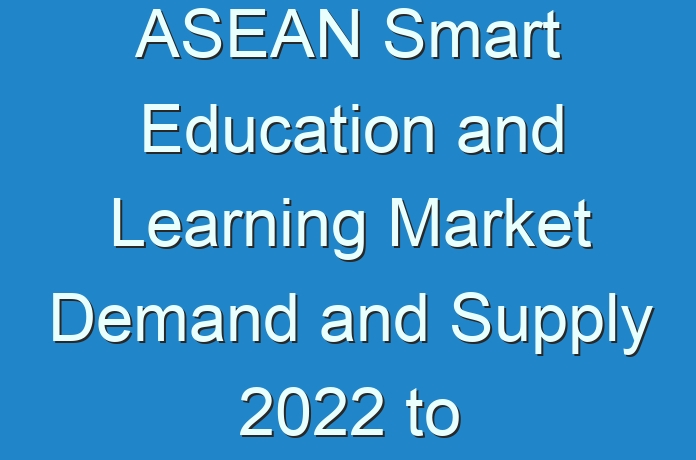
The smart education and learning market in the ASEAN region is rising due to government initiatives towards digitizing education, increasing use of smartphones and tablets, internet penetration and developed information and communication (ICT) infrastructure. In 2018, the ASEAN smart education and learning market was valued at US$ 61.46 Bn and is expected to reach US$ 368.79 Bn by 2027, expanding at a CAGR of 22.3% during the forecast period.
Growing usage of smartphones and tablets for education and learning purposes is driving the demand for smart education and learning in the ASEAN region. High level of smartphone penetration and strong ICT infrastructure coupled with high-speed internet is aiding in the growth of the market. Additionally, the launch of the ASEAN Economic Community (AEC) had a huge impact on the smart education market in the ASEAN region. As English is the official language of the AEC, it created a massive demand for English language learning among ASEAN countries as proficiency in the language is expected to enhance one’s employability.
The AEC facilitates the free flow of goods and services among ASEAN countries and one’s proficiency in English will enable in conducting business in the region more effectively. As a result of this, English speaking employees are in demand among government and also private agencies. On the other hand, technical and vocational educational courses are also aiding in the ASEAN smart education and learning market’s growth owing to the enhancement it offers to one’s employability.
Request Sample For More Information@ https://www.transparencymarketresearch.com/sample/sample.php?flag=S&rep_id=16106
Furthermore, government initiatives promoting mobile learning and online courses offerings have contributed toward smart education and learning market growth in the ASEAN region. However, lack of awareness among learners regarding the best course and the most useful course in terms of career development is a hindering factor for the growth of the smart education and learning market. Nonetheless, virtual reality-infused classrooms are expected to offer promising growth opportunities for the market in the future. Also, application of cloud computing in education, coupled with real-time analytics is expected to drive future market growth.
Based on delivery model, the ASEAN smart education and learning market has been segmented into classroom-based, desktop/mobile-based and simulation-based. The desktop/mobile segment held the largest market share in 2018. It is expected to grow at an exponential rate and remain the largest segment at the end of the forecast period in 2027 owing to the growing smartphone penetration in the ASEAN region. As a result of the affordability and easy-accessibility factors with regards to smartphones and availability of high-speed internet in most of the ASEAN countries, the desktop/mobile-based delivery model will remain the largest segment during the forecast period.
On the basis of end-use, the ASEAN smart education and learning market has been segmented into higher education, transnational education, TVET, language training, early childcare & pre-school, continual professional development, and qualifications, assessment & standards. Of these, the language training end-use segment contributed the highest revenue in 2018 and held the largest market share during forecast period. The transnational education is projected to be the fastest growing segment during the forecast period from 2019 to 2027 owing to the widespread use of massive open online courses (MOOCs) offered by foreign universities and institutions.
Read Latest Press Release Here@ https://www.prnewswire.com/news-releases/connected-living-room-market-to-reach-us984-51-bn-by-2024–owing-to-technological-advancements—tmr-300816943.html
On the basis of end-use, the ASEAN smart education and learning market has been segmented into higher education, transnational education, technical vocation & technical education (TVET), language training (English), early childcare & pre-school, continual professional development, and qualifications, assessment & standards. Owing to the wide scale popularity of Massive Open Online Courses (MOOCs) for their diverse courses that are offered by various international universities, transnational education is one of the fastest growing segments in terms of end-use. Furthermore, there is a growing demand for English language learning courses to increase one’s employability as English is the official language of the ASEAN Economic Community (AEC).
In terms of country, the ASEAN smart education region has been divided into Malaysia, Philippines, Indonesia, Singapore, Thailand, Vietnam and Rest of ASEAN countries (Cambodia, Laos, Burma & Brunei). Of these, Malaysia has a huge demand for English language learning courses and higher education courses. It is the largest segment as of 2019 in the ASEAN smart education and learning market. Malaysia is followed by Indonesia in terms of revenue share as a result of the developed state of ICT infrastructure in the country and availability of high speed internet. Additionally, high rate of smartphone penetration and the launch of AEC are also contributing factors towards the growth of the smart education and learning market in these countries.





